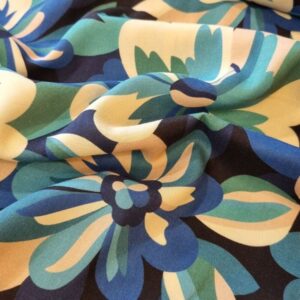Can Satin Be Made Soft? Exploring Fabric Compatibility
Introduction
Fabric compatibility is crucial in fashion and sewing, impacting the final product’s look, feel, and longevity. Understanding how different textiles interact can elevate your designs and ensure durability. In this article, we’ll explore whether satin can be made soft, examining the factors that influence fabric compatibility and offering insights into combining materials effectively.
Compatibility Analysis
Can satin be made soft? Yes, satin can be made softer through various methods and fabric combinations. Satin is known for its smooth, glossy surface, but its softness can vary depending on the fiber content (silk, polyester, or acetate) and weave. By blending satin with softer materials or using specific treatments, you can enhance its softness.
Why Satin and Other Fabrics Work Together
- Texture: Satin’s smooth texture can complement the softness of other fabrics like cotton or modal, creating a luxurious feel.
- Weight: Satin is generally lightweight, making it compatible with other light to medium-weight fabrics.
- Stretch: While satin has little natural stretch, it pairs well with stretch fabrics when stabilized correctly.
- Care Requirements: Satin often requires delicate care, which should be considered when pairing with more robust fabrics.
- Durability: Satin’s durability depends on the fiber type, with synthetic options being more resistant to wear.
Fabric Properties Comparison Table
| Property | Satin (Silk) | Satin (Polyester) | Cotton |
|---|---|---|---|
| Fiber Content | Natural | Synthetic | Natural |
| Weight and Thickness | Light | Light | Medium |
| Breathability | Moderate | Low | High |
| Stretch and Elasticity | Low | Low | Moderate |
| Wrinkle Resistance | Moderate | High | Low |
| Care Instructions | Hand wash, air dry | Machine wash, low heat | Machine wash, tumble dry |
| Durability | Moderate | High | High |
Benefits of Mixing These Fabrics
- Enhanced Texture and Visual Interest: Combining satin with other fabrics adds depth and contrast to garments or decor.
- Improved Comfort and Performance: Blending satin with breathable fabrics like cotton enhances comfort.
- Better Drape and Movement: The combination can improve the drape, making garments flow beautifully.
- Cost-Effectiveness: Mixing less expensive fabrics with satin can reduce costs while maintaining a luxurious appearance.
- Seasonal Versatility: Satin blends can be adapted for different seasons, providing warmth or breathability as needed.
- Design Possibilities: Mixing fabrics opens up a world of creative design options, from elegant evening wear to chic home decor.
Potential Challenges
- Different Shrinkage Rates: Pre-wash fabrics to minimize differences.
- Conflicting Care Requirements: Choose compatible fabrics with similar care needs.
- Texture Clash or Pilling: Test fabric combinations for compatibility.
- Seam Puckering: Use appropriate sewing techniques to prevent puckering.
- Color Bleeding or Fading: Test for colorfastness before combining fabrics.
Practical Solutions
- Pre-wash and treat fabrics to align shrinkage rates.
- Use compatible sewing techniques and tools to manage texture differences.
- Select colorfast fabrics to prevent bleeding.
Sewing & Styling Tips
- Sewing Techniques: Use a fine needle (size 70/10) and polyester thread for satin.
- Interfacing Needs: Use lightweight interfacing to stabilize seams.
- Seam Finishing: French seams or serging provide clean finishes.
- Pattern Selection: Choose patterns that highlight satin’s drape.
- Styling Ideas: Pair satin with textured fabrics for contrast in fashion or home decor.
Care & Maintenance Guide
- Washing Instructions: Hand wash satin or use a delicate cycle for blends.
- Drying Recommendations: Air dry to maintain fabric integrity.
- Ironing Tips: Use a low heat setting and press on the reverse side.
- Stain Removal: Treat stains promptly with gentle cleaners.
- Long-term Care: Store satin garments on padded hangers to preserve shape.
FAQ Section
-
Can you wash satin and cotton together?
- Yes, but use cold water and a gentle cycle to prevent damage.
-
Will satin shrink more than cotton?
- Satin, particularly silk, can shrink more, so pre-wash fabrics.
-
What needle size should I use for sewing satin and cotton together?
- Use a size 70/10 needle for satin and adjust based on the cotton’s weight.
-
Can you mix satin and cotton in one garment?
- Yes, mixing these fabrics can create interesting textures and styles.
-
How do you prevent seam puckering when combining satin and cotton?
- Use a walking foot and stabilize seams with interfacing.
-
Is it okay to mix satin and cotton for upholstery?
- It’s possible, but consider durability and care requirements.
-
What’s the best way to finish seams with satin and cotton?
- French seams or serging are recommended for a clean finish.
By understanding fabric compatibility and following these tips, you can successfully mix satin with other materials, enhancing your sewing projects with elegance and comfort.


Leave a Reply